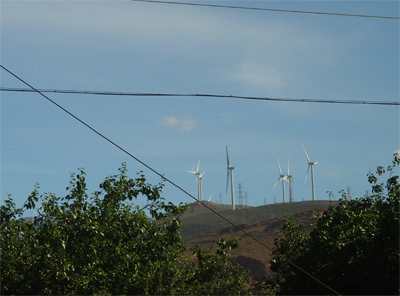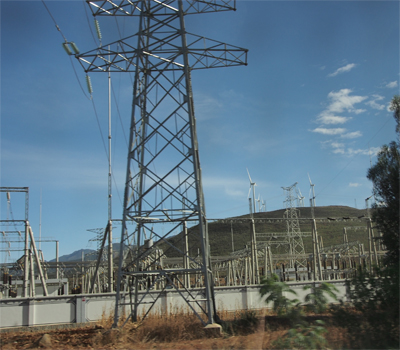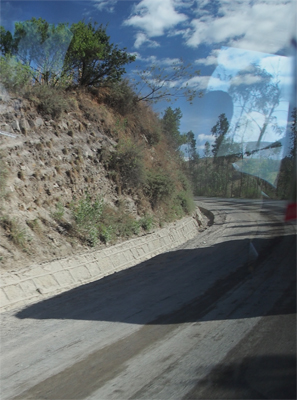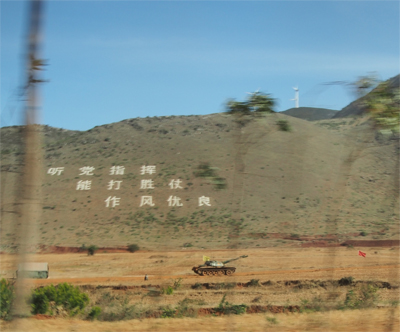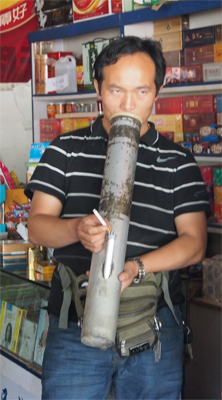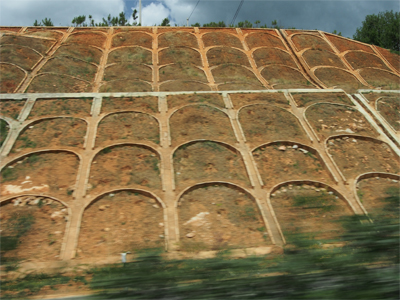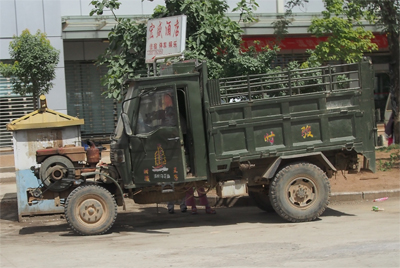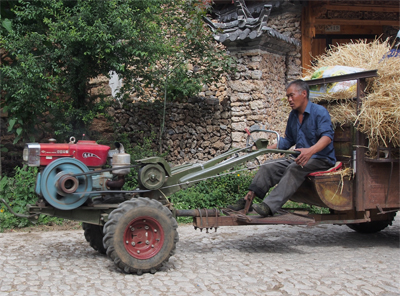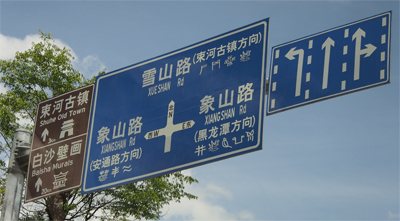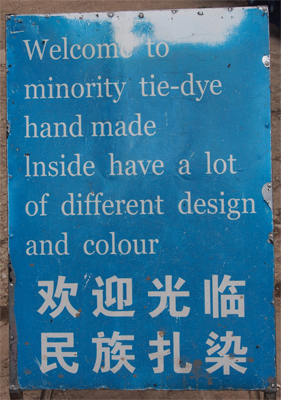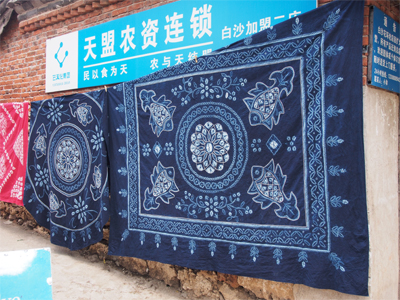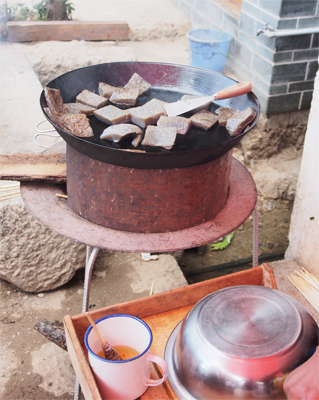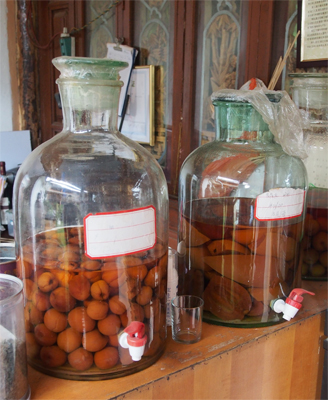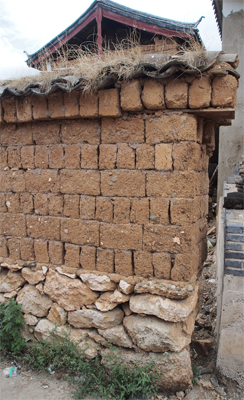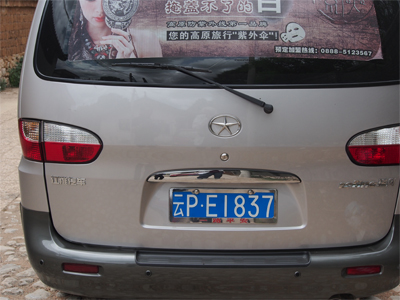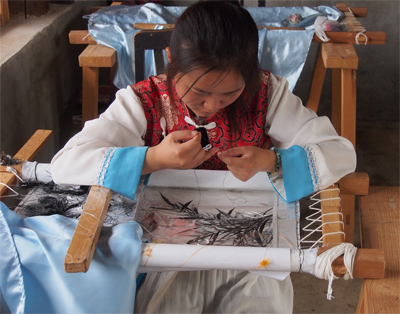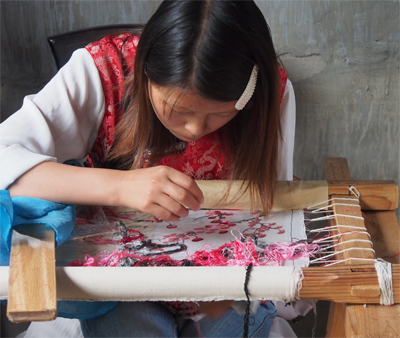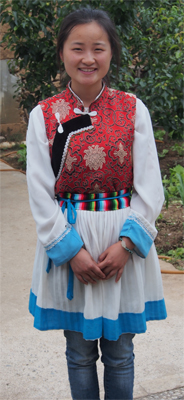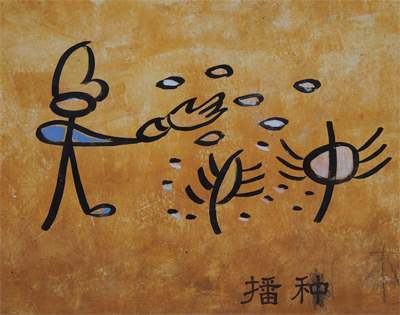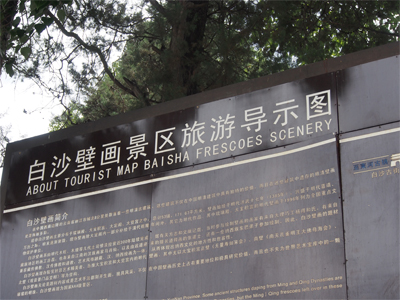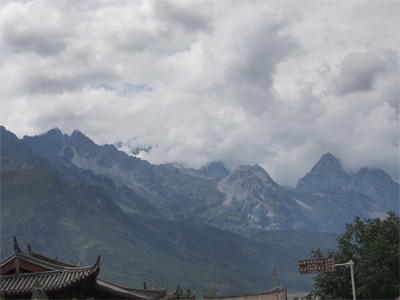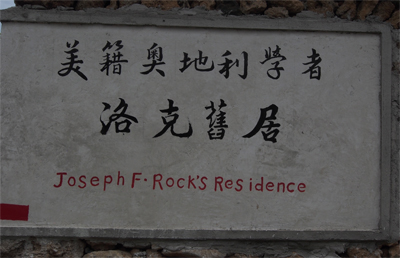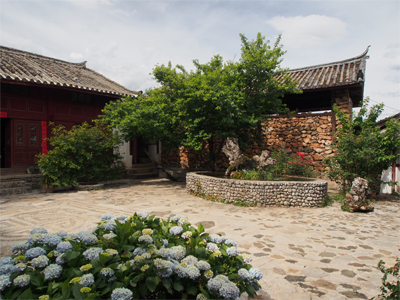Wed., 6/19/13 - Dali to Lijiang
This morning we rode in our mini-bus from Dali to Lijiang. The Old City of Lijiang is a World Cultural Heritage Site. The new city is a busy business and residential area mostly built after the 1996 earthquake here. Lijiang is home to the 1400 year-old Naxi (pronounced Nash ee) culture. There are 22 minorities in this province but 60 percent of the people are Naxi.
Driving from Dali to Lijiang
|
Wind farm |
Power sub-station |
Drop-off (shown at curve) along the entire road in the mountains
|
Chinese Army tank on maneuvers
|
Dried kiwi at our rest stop |
Smoking a cigarette with a water pipe
|
Erosion abatement |
Truck with single cycle motor and belt-drive |
Truck with single cycle motor and belt-drive
|
Street signs
|
We ate lunch at the Impressions Baisha Cafe in the small village of Baisha just outside the city. The houses in this village survived the earthquake because the foundations are granite, the walls are adobe mud and straw and the wooden supports use pegs not nails. The roofs are tile. This allows movement when the earth shakes.
|
|
Baisha tie-dyeing |
Street food
|
Wine jars |
Walls and construction which withstood the 1996 and other powerful earthquakes
|
Hybrid between Hundai and a Chinese car |
After lunch we visited the Baisha Naxi Embroidery Institute School. Girls learn embroidery skills from teachers and masters. It is very fine, taxing work and not many can do it seven days a week from 7:30 AM to 6 PM. Their work is beautiful.
|
|
|
Silk Roads map
|
Baisha Naxi Embroidery Institute |
Baisha Naxi Embroidery Institute
|
Guide in Naxi dress
|
On our way to look at the Baisha Frescoes, we got glimpses of the 18,360-foot Jade Dragon Snow Mountain that is at the eastern end of the Himalayas. The jagged peak is supposed to be in the shape of a dragon.
|
Naxi Dongba pictographs
|
Naxi Dongba pictographs |
|
The Baisha frescoes are from the Ming dynasty. We were able to see three of the 600-year old wall frescoes (no pictures allowed). They all depict the three religions to indicate peace among those living and trading in Lijiang: Tibetan Buddhism, Han Buddhism and Taoism. The original paint has survived being plastered over during the Cultural Revolution. They are painted on wood held together with pegs and painted with vermillion (red), gold (yellow), soot (black), and turquoise (blue). One has Buddha in the middle, one has the god of Mercy, and the third, a peacock. |
Jade Dragon Snow Mountain is in the clouds |
Woman in Baisha Village
|
We walked to the house of Joseph Rock, an Austrian-American explorer, geographer, linguist, and botanist . He studied herbal medicines here from 1922 to 1946. His house, like others in the village, is built with rough stones so well placed that they only used mud and straw as mortar. Dr. Rock's house is a sort of museum. It is not restored or used for any new purpose. Dr. Rock is also remembered for drawing maps through the Himalaya Mountains used by the Flying Tigers and for his many contributions to National Geographic magazine.
|
|
|
Courtyard at Rock's house
|

